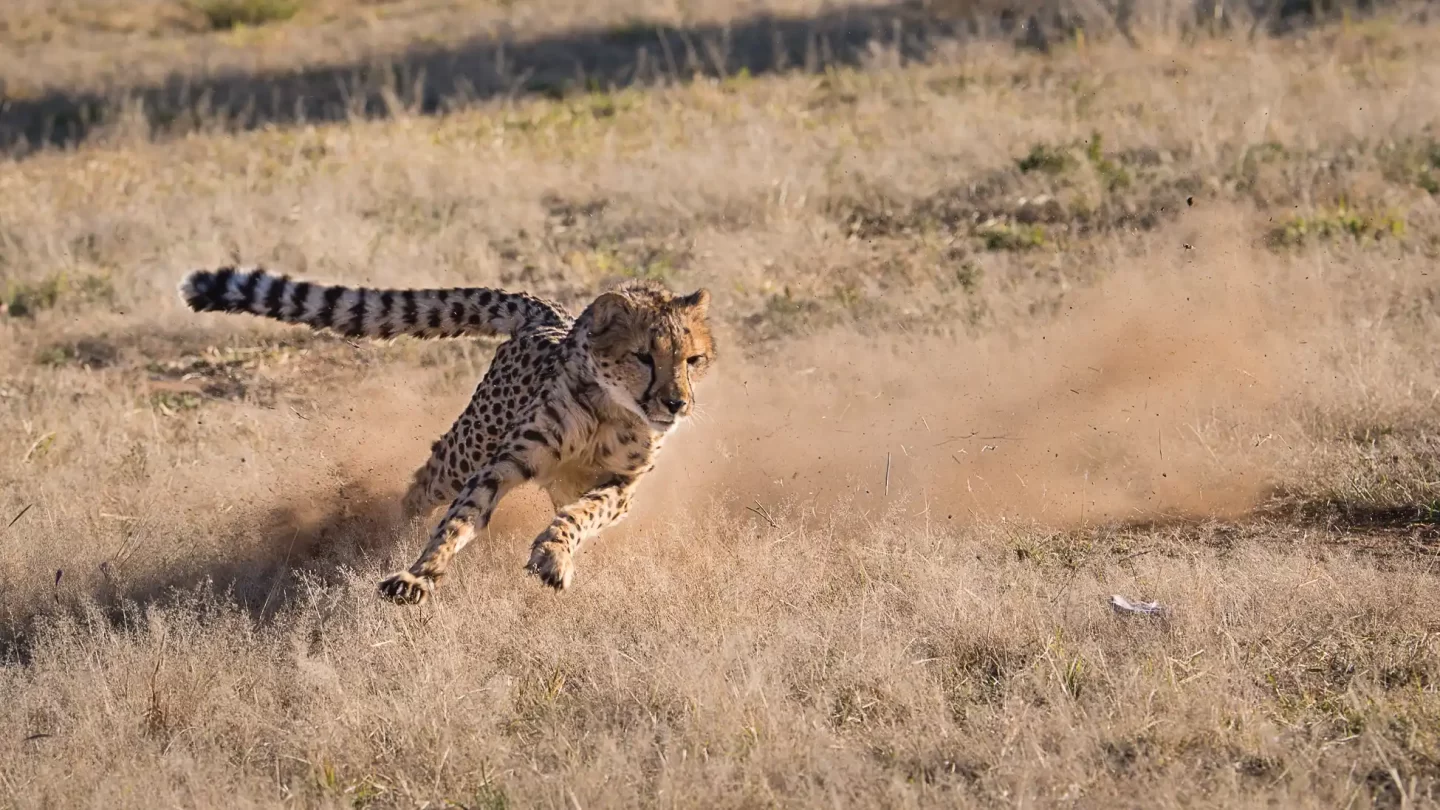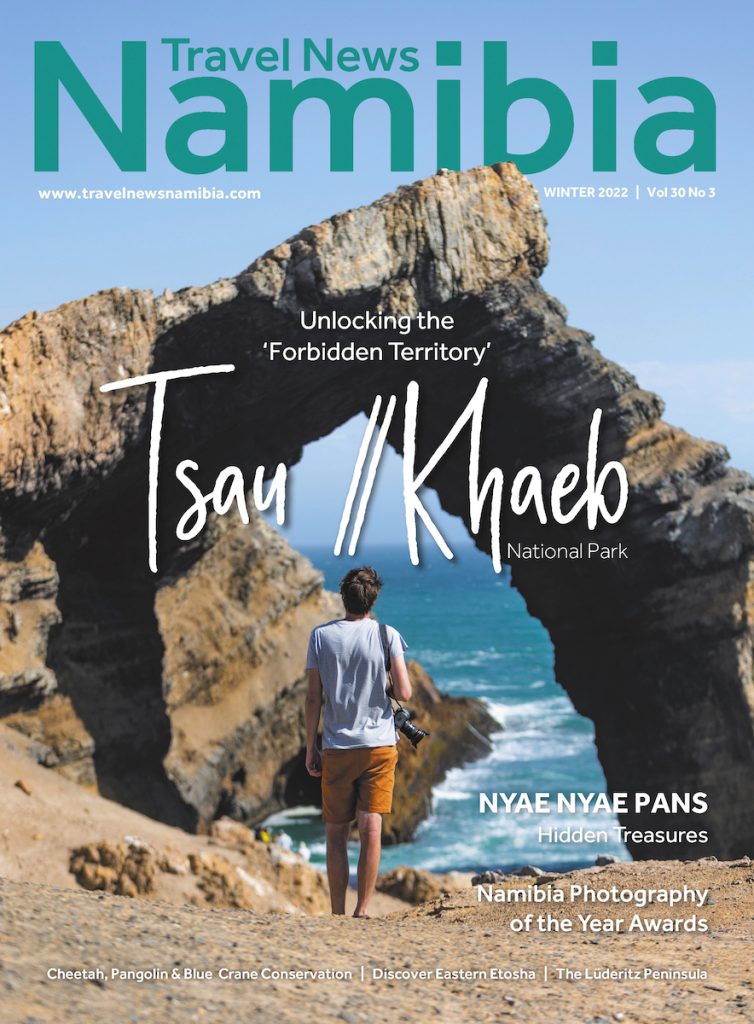

Three decades of cheetah conservation
Text & Photographs Cheetah Conservation Fund
From the Winter 2022 issue
When American scientist Dr Laurie Marker launched the Cheetah Conservation Fund (CCF) in 1990, she had no idea where this new adventure would take her. A zoologist from California, she learned about threats to a declining wild population while conducting in situ research in Africa in the late 1970s and through the 1980s. Dr Marker routinely travelled to Namibia and other cheetah-range countries from her positions with Wildlife Safari and the Smithsonian Institution’s National Zoo to study the habits of the world’s fastest feline. But it’s what she learned about human behaviour that shocked her. Habitat loss, loss of prey, and conflict with livestock and game farmers put cheetahs on the fast track to extinction. Livestock and game farmers were shooting, trapping and removing hundreds of cheetahs each year – more because of perceived threats than actual predation. She realised if no one would soon intervene, the cheetah might be lost forever.
Throwing caution to the wind and selling her worldly possessions, Dr Marker formed CCF in 1990, the same year Namibia earned its independence from South Africa, and relocated to Otjiwarongo, a rural town in north-central Namibia which translates to “the place where the fat cattle live” or “the beautiful place”. There, Dr Marker set up CCF’s first base in a borrowed farmhouse and travelled around the country interviewing farmers about cheetahs and their farming systems. With consistent growth over three decades, CCF has become an internationally recognised research, education and conservation institution under Dr Marker’s leadership. The cheetah population of Namibia has stabilised and CCF is now the longest running and most successful cheetah programme in the world. Within a couple years, CCF’s research base moved onto their own farm, which over the years has become a network of neighbouring properties of a 58,067-ha private wildlife reserve and model farm managed by CCF. Today, the CCF Centre, with its modern facilities set against the breath-taking backdrop of the Waterberg Plateau, is open to the public 364 days a year from 09:00 to 17:00.
“We started running at cheetah speed 30 years ago, and we haven’t looked back since,” says Dr Marker. “Our research has been pioneering from understanding the overall health of wild cheetahs, the home range needs through radio/satellite collar monitoring, and mapping population structures through our genetics research.”
CCF’s 50-person team of conservationists, educators, scientists and veterinarians conduct research studies and work with local farming communities to encourage coexistence. The team develops non-lethal predator control tools and livestock farming training protocols at the Otjiwarongo Centre and deploys them throughout Namibia and in other cheetah-range states.
One of CCF’s most popular contributions to cheetah conservation is its Livestock Guarding Dog programme. For the past 28 years, specially trained Turkish Anatolian shepherds and Kangal dogs are bred at CCF and reared with small stock like goats and sheep from birth. The bonding of these species is important, because the dogs will want to serve as bodyguards for herds while grazing on open farmlands. The dogs’ presence and exceptionally loud bark are usually enough to keep cheetahs and most other predators at bay, thus reducing pressure on farmers to take lethal action. CCF livestock guarding dogs are credited with sparing the lives of hundreds of cheetahs and other predators on the savanna. Although over 700 of these dogs have been bred and placed with rural farmers, there is a two-year waiting list for those seeking a trained dog.
Day visitors and overnight guests can request a tour during the centre’s trading hours without booking in advance. The tour includes an opportunity to meet the CCF livestock guarding dogs and the animals on CCF’s model farm, as well as a stop at the Dancing Goat Creamery to sample cheeses, fudge and ice cream made with milk from CCF’s Saanen dairy goats. The model farm is a self-supporting research and testing facility with commercial agriculture enterprises that doubles as a training facility for local Namibian farmers. CCF’s artisan cheeses are sold at CCF’s café and in retail markets in Namibia to demonstrate how goat farmers can earn more income.
CCF’s mission is to keep cheetahs living free and wild, and with this, CCF releases cheetahs back into the wild whenever possible. Over the past 33 years, CCF has released more than 700 cheetahs that were caught in farmers’ traps or otherwise taken from the landscape. However, many cheetahs coming to CCF will never live in the wild, as they have been orphaned or injured and are unable to hunt or survive on their own. All CCF tours include a visit to the CCF cheetah sanctuary, a series of wide-open natural enclosures where almost 40 of these iconic cats reside. Most were brought to CCF at a young age for veterinary care and management in cooperation with the Namibian Ministry of Environment, Forestry and Tourism (MEFT). They serve as ambassadors of their species to remind visitors that fewer than 7,100 of their cousins remain in the wild.
CCF activities without advanced bookings include walking tours around the sanctuary, a visit to CCF’s cheetah museum, watching daily cheetah feeding, and the Cheetah Drive. Visitors who book in advance can take part in special activities including a daily exercise session at 08:00, called the Cheetah Run, which provides an excellent opportunity to photograph the world’s fastest land mammal running at top speed. Or join a CCF cheetah keeper in daily feeding and care of CCF’s cheetahs in Behind the Scenes Cheetah Feeding, another excellent photo opportunity.
Guests can spend a few days at CCF to get the fully immersive cheetah experience. Babson House, a three-bedroom exclusive property, comes with a private chef and a veranda that overlooks the sweeping Namibian landscape and CCF’s cheetah sanctuary, providing the ultimate in eco-safari travel. For guests on a more moderate budget the five-suite Cheetah View Lodge, with a private dining room overlooking a water hole and the Waterberg Plateau, is an excellent option. No matter where you choose to stay at CCF, you will be treated to delicious farm-to-fork cuisine featuring a wide variety from CCF’s organic vegetable garden and cheeses from the Dancing Goat Creamery. Morning bird walks and/or evening sundowner game drives in CCF’s Little Serengeti can be booked through CCF’s tourism team, which is open to customised cheetah adventures depending on each guest’s wishes. For information on booking a CCF cheetah adventure, please visit www.cheetah.org/cheetah-ecolodge/.
All CCF’s activities are designed for sustainability. With this in mind, CCF has developed a Biomass Demonstration Centre (BDC), because millions of hectares of Namibian farmlands have been encroached with woody thornbush due to overgrazing by livestock, droughts and climate change. This bush encroachment has reduced the amount of grazing lands and wildlife habitat, resulting in pressure on farmers, which exacerbates conflict with predators. To help mitigate, CCF launched a habitat restoration project, CCF Bush, which harvests excess thornbush and converts it into Bushblok, a clean-burning fuel log that provides cooking fuel in remote villages without electricity, or for a local braai. CCF initiated the project to kickstart a Namibian biomass industry, and today, CCF has 44 employees working full time on several biomass efforts. CCF has been recognised with several top environmental distinctions around these efforts and guests may request a tour of the BDC.
Ever since CCF set up base in Namibia 30 years ago, things have gotten better for the cheetah globally. Namibia, with the greatest density of wild cheetah of any country in the world (estimated at 1,500), proudly proclaims its status as “cheetah capital of the world”. From a nation that once persecuted cheetahs as vermin to the leader in conservation, Namibia has had just as much of an incredible journey as CCF.
“The Ministry of Environment, Forestry and Tourism has truly been our partner in conservation, and we owe much of our success to this collaboration. Namibia is the most progressive country in Africa with regards to species conservation and encouraging biodiversity, with conservation being included in its Constitution,” says Dr Marker. “Namibia is famous for its conservancy initiative. CCF is a part of the Waterberg Conservancy, and together with neighbouring farmers and the eastern communal communities, make up the Greater Waterberg Landscape. We are very fortunate to work in such a beautiful and peaceful place with some of the best conservation policies on earth.”
Proceeds from ecotourism activities in Namibia support CCF’s research, education and conservation programmes for the cheetah throughout Africa. To donate or find out how you can help, please visit www.cheetah.org/donate/.
“When you are thinking about your next vacation, please come see us. You will be supporting conservation, biodiversity and a healthier planet, and at the same time you will get amazing photographs and have a safari adventure you will never forget,” promises Dr Marker.





